From the beginning, Max Mara’s ethos has been to turn ideas into garments that women will not only desire but want to live in: an all-round wardrobe for the modern, stylish yet elegant woman.
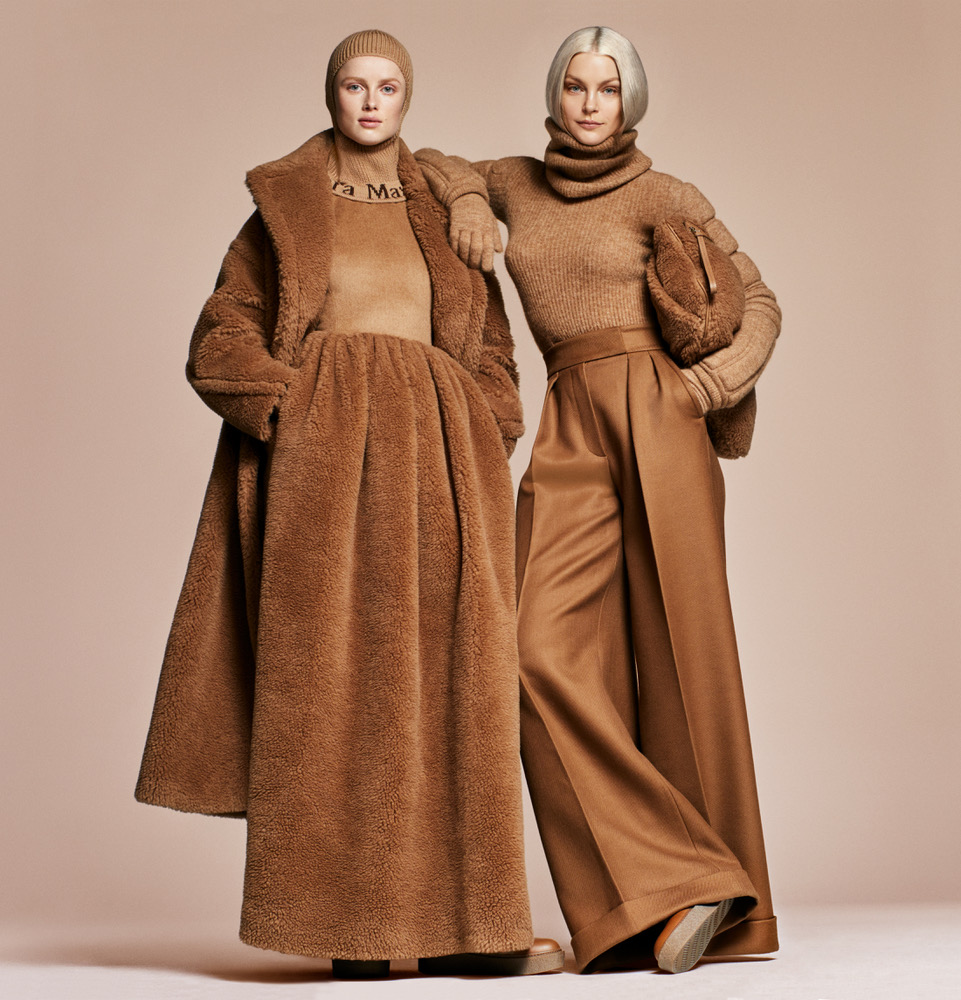
The House began its journey in 1951 when law graduate Achille Maramotti, great-grandson of the area’s most sought-after dressmaker and son of the founder of an established tailoring school, saw infinite potential in the dynamically changing world around him. He saw an opportunity in the modernisation of the family legacy of craftsmanship with the evolving technologies of the future and his vision was to produce a collection inspired by the most sophisticated French couture but manufactured with the latest industrial techniques.
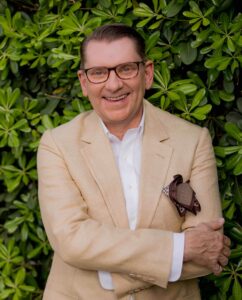
Ian Griffiths
After launching as a ready-to-wear label in 1959 Max Mara began to flourish as women realised the potential for a new modern silhouette that they could wear from day to night. Achille Maramotti became known as a ground-breaking entrepreneur who was changing the face of the industry and providing stylish, comfortable and accessible fashion that combined craftsmanship and technology.
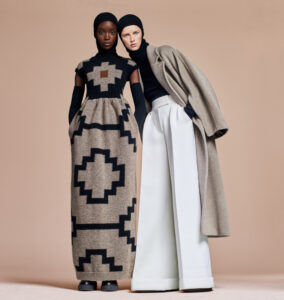
Over the past 70 years, the Italian House has continued to promote the same values its founder had in the beginning: never compromise on quality and always move with the times, constantly modernising techniques and silhouettes but staying true to the DNA of the house. Max Mara still owns its factory in Italy which gives the house the freedom to experiment with state-of-the-art machinery and classic crafts and processes. This also allows the freedom to continue to develop the now iconic Max Mara coat, which is reinvented season after season.
In 1987 British designer Ian Griffiths joined Max Mara and has remained at the house ever since. As Creative Director he continues to honour the vision of Achille Maramotti, but remains relevant to the time and produces garments that women truly want to wear. While his methods in many ways are traditional, he is constantly evolving the silhouette, experimenting with innovative materials and finding ways to create clothes that are both modern and timeless. As the Fall/Winter 2022-23 collection launches, we discover more about the latest designs and what we can expect from the brand in the near future.
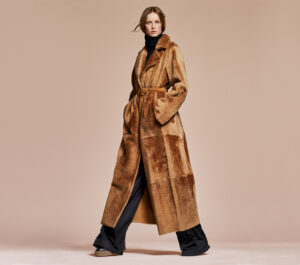
Congratulations on the Fall/Winter 22 collection – tell us a little about the collection – the inspiration, the silhouettes – and what it means to you.
Thank you, that’s a big question! There’s a narrative behind each collection which is like the makings of a novel, so I could write a novel in response to your question! I saw an exhibition at the Tate Modern in London. It was a major retrospective of the work of Sophie Taeuber-Arp; a creative polymath whose oeuvre was overlooked for decades, and now, she is happily being rediscovered. This formidable woman was an architect, dancer, textile designer, painter and sculptor. She was a really rare thing; a designer and an artist at the same time. And even rarer, she was a modernist who invested even the most everyday objects with a sense of magic and mystery.
We’re talking about the turbulent early decades of the twentieth century. At Cabaret Voltaire in Zurich, Taeuber-Arp and fellow artists of the avant-garde including Wassily Kandinsky, Paul Klee, Giorgio de Chirico, Max Ernst and Guillaume Apollinaire met night after night. Their performances, publications, recitals and readings produced an astonishing new aesthetic: Dada, a call for peace which resonates with the times we are living in now. Taeuber-Arp’s hastily improvised costumes and the marionettes she designed for her most famous work, ‘King Stag’ radiate joyful energy, kinetic spirit and theatrical panache. They are fully formed fairy-tale characters with a charm that lies somewhere between the robotic and the animal. This story has all the elements I love; a crystalline alpine landscape, avant-garde art and design, intellectual rigour with a dash of the cabaret thrown in, and the story of a strong unstoppable woman.
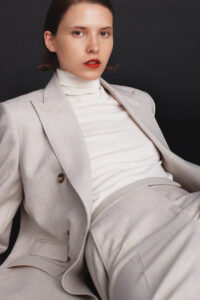
The Max Mara DNA and silhouette have had strong consistency for many years – what is your take on this today, how has it developed and where is the brand heading in terms of design?
I joined the company in 1987, which was the height of first-generation “power dressing” – the dress code that Max Mara was at the forefront of devising. It was a way of dressing that offered women a credible and powerful image to be successful in the male-dominated workspace. But it was quite a rigid uniform, and as women became more successful, they quite rightly started to demand more freedom in the way they dressed. This has been the overall trajectory in terms of design during my time at the company; always respecting the philosophy and iconic elements of the brand – the colour camel, for example – but at the same time offering more choices and opportunities for self-expression.
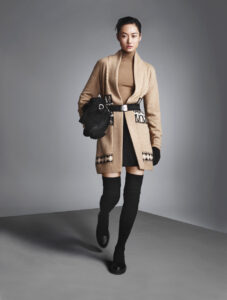
What is it about a Max Mara coat that is so unique and why in your opinion should every woman own one in their lifetime?
A Max Mara coat is the perfect integration of image, design and manufacture. Every coat that we launch has been considered in terms of perfect volume, unsurpassable materials, and carefully nuanced proportions, finish and detail. The result is an object that has glamour and status. A Max Mara coat is a life companion. Today, we are seeing younger women wearing coats that once belonged to older relatives and I think this highlights how a Max Mara coat is a heritage item.
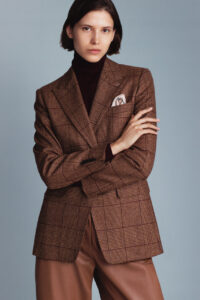
What can you tell us about sustainability at Max Mara?
I do not doubt that the fashion industry will work out a framework of codes for sustainability. In the meantime, I point to our ethos of offering well-designed clothes that last longer than the current season. Every collection tells a story, it’s true, but when you take them apart, you find pieces that will integrate perfectly into your existing Max Mara wardrobe.
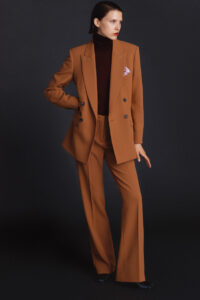
Who or what is your biggest inspiration?
My most important muse is the Max Mara woman. When I see a woman in the street wearing Max Mara, I glow with pride. It’s an even bigger thrill than seeing the collection on the runway or being photographed on a celebrity.
Over the years you have seen the fashion industry change, how would you assess the landscape today?
You could say that fashion has broken down. There’s definitely no such thing as ‘the’ fashion anymore, and that’s a good thing because everyone is free to find their own look. But that creates a certain amount of confusion because there are so many ideas being produced. Social media has most definitely accelerated this proliferation, to the point where a great deal of the ‘stuff’ that’s produced has no meaning. Max Mara represents lasting values; it’s like a rock in this ocean of ideas.
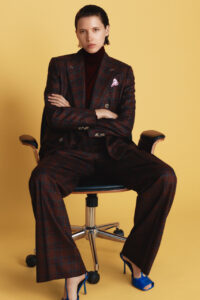
We know you are still very traditional in the way you sketch your designs – tell us about the power of sketches and can you share a little on your creative process?
A sketch is quite simply the most efficient way of communicating your ideas. It’s also a very satisfying and therapeutic activity. I try to set aside time for sketching because that’s how I work out my ideas. I let the design flow from the pen. If something is difficult to design, the chances are it will be difficult to wear, and that’s not Max Mara.
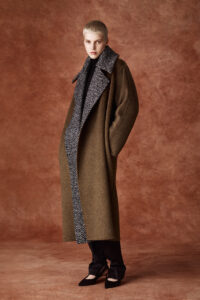
With many brands entering the world of Web 3, the Metaverse and NFTs – where does Max Mara stand on this and as a designer what is your take on fashion in this digital world?
The beauty of Max Mara starts with the finest materials. There’s no such thing as virtual cashmere, you can’t touch a virtual coat, and you can’t pass it on to your daughter or niece.
What else is in the pipeline for the rest of the year?
I’m looking forward to showing our ideas for Summer 2023 in Milan, and I’m working on the Prefall 2023 collection. We will be showing that in December, and I’m thinking about the format that the presentation will take. Maybe a show? If I could, I would put on a show every month! Fashion shows have evolved to the point where they are almost theatre. The perfect medium for telling the story behind the collection. I’m also coming to Dubai, hopefully in November and I look forward to meeting women in the world of Max Mara.
What can you tell us about Max Mara in the Middle East and what is a message you would send to your clients and fans here?
Max Mara respects women: that’s the starting point for everything we do. I don’t like the term ‘modest’ fashion, because it implies that women who wear it want to blend into the background. We design for the kind of woman who wants to be noticed for her discreet glamour and pulled-together chicness. There’s definitely a wow factor to Max Mara, but it’s the kind of wow that’s said under your breath. We find those women all over the world. Max Mara is a lingua franca and a lot of what we do is hard-wired for so-called modest fashion, without us having to think about a particular geographical region.
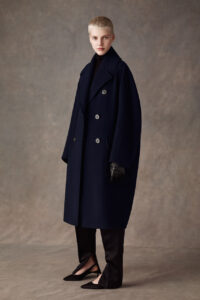
What is the motto that you live by?
Classic doesn’t have to mean conservative. It applies to my own style and everything I do.
What is one piece every woman should invest in for the Fall/Winter 22 season?
If you haven’t already got one, then invest in a coat. If you have, create a new silhouette with a teddy skirt, either long or short.















